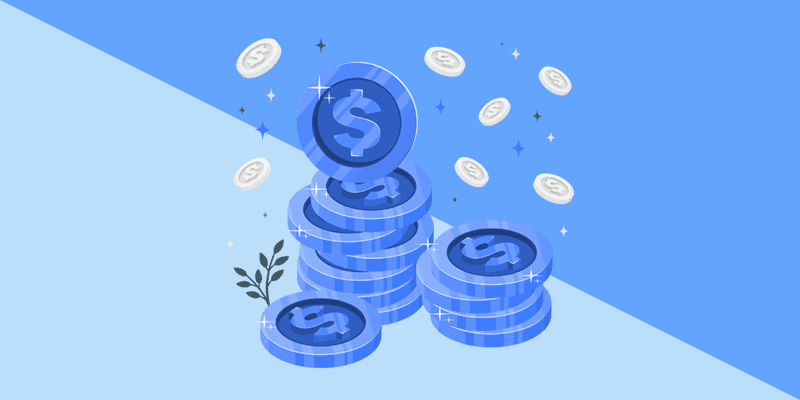Note: this cheat sheet is updated for the latest 2024 and 2025’s curriculum.
Whilst a relatively smaller topic weight in the overall Level 1 exams, CFA Alternative Investments is an important topic career-wise if you work in asset management as it is expected to capture 49% of global asset management revenue by 2024.
I personally found this topic very interesting – a nice break from the traditional fixed income and equity. It is the perfect topic to master to maximize your exam scores since it is a relatively short reading for its topic weight.
Hence, we created this cheat sheet – which is essentially a CFA Level 1 Alternative investments notes and formula sheet – to help save you some precious study time. ☕
Our Cheat Sheet series focuses on one specific topic area for each CFA Level.
More Cheat Sheets will be published and continuously updated, sign up to our member’s list to be notified first.
By referring to the CFA Learning Outcome Statements (LOS), we prioritize and highlight the absolute key concepts and formula you need to know for each topic. Plus some topic-specific tips at the end too!
A nice and short topic for once, let’s master this 🙂
- CFA Level 1 Alternative Investments: An Overview
- LM1: Alternative Investment Features, Methods and Structures
- LM2: Alternative Investments Performance and Returns
- LM3-6: Investments in Private Capital: Equity and Debt, Real Estate, Infrastructure, Natural Resources, Hedge Funds
- LM7: Introduction to Digital Assets
- CFA Level 1 Alternative Investments Tips
CFA Level 1 Alternative Investments: An Overview

Given that this Study Session is limited to a single reading with roughly half a dozen LOS, candidates are not expected to develop a particularly detailed understanding of this material – at least not for the Level 1 exam. However, the readings at Levels 2 go into greater depth, but cover the same sub-categories listed above.
CFA Level 1 Alternative Investments’ topic weighting is 7-10%, which means 13-18 questions of the 180 questions of CFA Level 1 exam is centered around this topic.
It is covered in Topic 9 which contains 7 Learning Modules (LMs).
Here’s a summary of Alternative Investments chapter readings:
| Learning Module | Sub-topic |
|---|---|
| 1 | Alternative Investment Features, Methods, and Structures |
| 2 | Alternative Investment Performance and Returns |
| 3 | Investments in Private Capital: Equity and Debt |
| 4 | Real Estate and Infrastructure |
| 5 | Natural Resources |
| 6 | Hedge Funds |
| 7 | Introduction to Digital Assets |
The CFA curriculum tends to categorize all assets other than equity and fixed-income as alternative investments, so this section covers a broad range of topics from tangible assets such as gold to hedge fund strategies. Specifically, the categories of alternative investments are:
| Hedge funds | These are not distinct assets, many hedge funds invest in stocks or bonds. What distinguishes hedge funds as an alternative investment is the variety of strategies that they employ. Investing in hedge funds can offer very attractive risk adjusted returns, but expect to pay significant fees for the privilege of doing so (and don’t expect to be able to access your money for a while). |
| Private capital | This category includes private equity and private capital. Under private equity, there are two important sub-categories: 1) buyout funds, which make highly-leveraged purchases of established companies, and 2) venture capital funds, which provide equity to young companies that have yet to establish themselves in the market (or, in some cases, in an office outside of their founder’s garage). Private debt refers to debt provided to private entities, such as direct lending, mezzanine loans, venture debt and distressed debt. |
| Natural resources | We’ve all learned how to invest in commodities by watching Trading Places (and if you haven’t, you must), but the curriculum goes into a bit more detail. Commodities investing is growing at a rapid rate and this topic will play a larger role in the curriculum at Levels 2 and 3. This chapter now also includes timberland and farmland. |
| Real estate | Owning real estate is a relatively simple concept, but there are several ways to think of this as an asset class. It is possible to own real estate directly, for example as many own their own home or rental properties, or indirect through an investment vehicle such as a real estate investment trust (REIT). |
| Infrastructure | Investment in long term, capital intensive assets such as roads, schools, highways, sewage system, utilities, hospitals, utilities etc which are for public use and are essential for a country. |
In a nutshell, the various markets in which alternative investments trade are less liquid than traditional stock and bond market, which means that there is greater potential to exploit inefficient pricing and earn abnormal profits.
With alternative investments expected to hold 49% of global asset management revenue and represent 17% of AuM by 2024, it is important for any financial analyst to understand how best to utilize this asset class to improve a portfolio’s risk-return profile.

LM1: Alternative Investment Features, Methods and Structures
Alternative investments characteristics
- Narrow manager specialization
- Low correlation with traditional assets
- Less regulation and lower transparency
- Limited and potentially biased historical risk and return data
- High fees
- High use of leverage
- Restrictions on redemptions
Categories of alternative investments
- Private capital, which includes private equity (leverage buyout, venture capital funds) and private debt (direct lending, mezzanine loans, venture debt, distressed debt).
- Real assets, which includes real estate, infrastructure, natural resources such as commodities, timberland and farmland etc.
- Hedge funds
Investment methods for alternative investments
- Fund investing: Basically indirect investing, where investor contributes money to a fund, and the fund makes investment on the investor’s behalf.
- Co-investing: a hybrid between direct and indirect investing, where the investor can make investing alongside a fund.
- Direct investing: the investor makes a direct investment in a company or project without using an intermediary.
Investment and compensation structures
Partnership structures:
- General partner (GP): The fund manager is usually the GP, responsible for making investment decisions for the fund, and theoretically bears unlimited liability.
- Limited partner (LP): LPs are outside investors that provide capital to the fund in return for a % partnership in the fund. They are usually passive and don’t play an active role managing the fund.
Compensation structures:
- GP usually receives a management fee – typically 1-2% – based on assets under management (AuM, common for hedge funds), or commited capital (usually for private equity).
- In addition, GP usually receives a performance fee (incentive) on realized profits to reward them for the upside. A common structure is “2 on 20”, i.e. 2% management fee and 20% performance fee.
- However, performance fees are usually paid only if returns exceeds a specific hurdle rate. There are 2 types:
- Soft hurdle rate: Performance/incentive fees are earned on the entire return if it exceeds hurdle rate.
- Hard hurdle rate: Performance/incentive fees are earned on returns in excess of hurdle rate. rGP = max[0, p(r − rh)]
Investment clauses and provisions
| Catch-up clause | Allows GP to receive all 100% of distributions in excess of the hurdle rate until the GP catches up with its cumulative performance fee. rGP = max[0, rcu + p(r − rh − rcu)] |
| High water mark | This is the highest value, net of fees, used to calculate the performance fees. |
| Waterfall | The distribution method that defines the order of allocation to LPs and GPs. |
| Clawback | Allows LPs to reclaim part of GPs performance fees if fund performance subsequently reversed. |

LM2: Alternative Investments Performance and Returns
Multiple on Invested Capital (MOIC)
MOIC=\frac{Realized \space value \space on \space invesment+ Unrealized \space value \space of \space investment}{Total \space amount \space of \space invested \space capital} Investor’s return net of fees
r_{GP} = (P_1 \times r_m)+max[0, p \times (P_1-P_0)]
LM3-6: Investments in Private Capital: Equity and Debt, Real Estate, Infrastructure, Natural Resources, Hedge Funds
Private capital
Private equity
| Leveraged buyouts (LBOs) | Use borrowed funds to buy an established company. The company will be restructured to improve operations and eventually increase cashflow and profit. 2 types of LBOs: – management buyouts (MBOs) where current management team buys and runs the company, – management buy-ins (MBIs) where current management team is replaced and run by the acquirer. |
| Venture capital (VC) | Investments in less established companies with significant growth potential. VC investing can take place at various stages: – Formative stage: angel investing, seed investing, early stage – Later stage financing: for expansion after commercial productions and sales but before IPO – Mezzanine financing: preparing for IPO. |
| Growth capital | Minority equity investments in established companies that require funds for growth/expansion, restructuring, acquisition etc. |
- Private equity exit strategies: trade sale, IPO, recapitalization, secondary sale, write off/liquidation.
Private debt
| Direct lending | Direct capital in the form of senior and secured loans. |
| Mezzanine debt | Debt subordinated to senior secured debt, but senior to equity capital. Higher interest rate reflecting higher risk, and may include equity participation. |
| Venture debt | Debt provided to early stage or startup companies that have negative or no cashflow. |
| Distressed debt | Funds provided to mature companies with financial difficulty and/or cash flow problems. |

Real estate
- Real estimate investment categories: Residential property, commercial real estate, REITs, mortgage-backed securities.
- 3 categories of index to measure real estate returns:
- Appraisal index: uses estimates rather than real transaction values, which understates volatility.
- Repeat sales index: Uses repeat sales of properties to construct the indices, but this suffers from sample selection bias since it’s unlikely the same property is available for sale annually.
- REIT index: this is based on prices of publicly traded REITs, which accuracy depends on how frequently the shares of the index trade.
- Forms of real estate investing:
| Debt | Equity | |
|---|---|---|
| Private | Mortgages, construction lending | Direct ownership, real estate funds, private REITs |
| Public | MBS, CMOs, mortgage REITs | Shares in real estate development companies, listed REIT shares, mutual funds, index funds, ETFs. |
Infrastructure
- Investments in real, capital intensive, long-lived assets
- Categories of infrastructure investments:
- Economic infrastructure assets: transportation (road, railways etc) and utility assets (water, gas, electricity distribution).
- Social infrastructure assets: examples are healthcare and educational facilities.
- Brownfield investments are investments in existing infrastructure assets.
- Greenfield investments are investments in yet to be built infrastructure assets.
Natural Resources
Commodities
- Commodities futures price = S0(1+r) + Storage costs – Convenience Yield
- Contango = when commodity futures price > spot price. Happens when there is little or no convenience yield.
- Backwardation = when commodity futures price < spot price. Happens when there is high convenience yield.
- 3 sources of return for a commodity futures contract:
- Roll yield: Spot price – futures price
- Collateral yield: interest earned on the collateral
- Spot prices, which is determined by supply and demand
Farmland and timberland
The 3 sources of return for farmland and timberland:
- biological growth;
- prices of crops/timber;
- land price appreciation.
Hedge funds
Hedge fund strategies:
| Event-driven | A short-term investing strategy that seeks to exploit pricing inefficiencies before or after a major corporate event, e.g. bankruptcy, spin-off, mergers and acquisitions. Specific strategies include merger arbitrage, distressed debt, activist, special situations. |
| Relative value | A strategy that seeks to profit from the price differential between related financial instruments such as stocks and bonds. Examples include fixed income convertible arbitrage, fixed income asset backed, fixed income general, volatility and multi-strategy. |
| Macro | Uses a top-down approach to identify market trends, taking bets on the direction of a market, currency, exchange rate, interest rate, commodity or any macroeconomic variable. |
| Equity hedge | A bottom-up approach which takes long or short positions in equity or equity derivative securities. Examples include market neutral, fundamental growth, fundamental value, quantitative directional, short bias, sector specific strategies. |
LM7: Introduction to Digital Assets

Investment Features of Digital Assets vs. Traditional Asset Classes
- Fundamental Value: Unlike stocks or real assets, most digital assets lack cash flows or intrinsic value, making their valuation based on scarcity and future value transfer.
- Transaction Validation: Digital assets leverage decentralized ledgers for transaction recording, in contrast with the centralized bank and government systems of traditional finance.
- Medium of Exchange: Cryptocurrencies aspire to complement fiat currencies in transactions, yet face challenges in adoption and cost-effectiveness.
- Legal and Regulatory Protection: The regulatory environment for digital assets is still evolving, whereas regulations concerning financial instruments are well established and consistent across most jurisdictions.
CFA Level 1 Alternative Investments Tips

This is a heavily qualitative Study Session that will require you to use your calculators sparingly, if at all.
The key answering questions in CFA alternative investments topic is to understand and identify the differences between various types of alternative investments as well as the distinguishing features of categories within asset classes.
For example, it is important to know the difference between direct and indirect real estate investing.
In the case of hedge funds, it is important to be able to distinguish between the different classifications of strategies (see the sample question below).
An exam question on alternative investments may look something like this:
Which of the following hedge fund strategies is most likely to be categorized as a relative value strategy?
A. Merger arbitrage
B. Quantitative directional
C. Fixed income convertible arbitrage
Option C is the correct answer. Fixed income convertible arbitrage is a relative value strategy that involves taking long and short positions in related securities with a view to profiting from short-term pricing discrepancies.
Choice A is incorrect because merger arbitrage is an event-driven strategy. Choice B is incorrect because quantitative directional strategies fall in the category of equity hedge strategies.
This sample shows that, while the Level 1 curriculum covers alternative investments at a high level, it is still necessary to develop a strong understanding of important details.
The CFA Level 1 Alternative Investments may be covered from a highly qualitative perspective, but it is not unreasonable to expect a question asking you to calculate hedge fund fees. Such a question may look something like this:
The Axe Capital Fund begins the year with $2 billion of assets under management (AUM). Fund manager Bobby Axelrod charges a 2% management fee (based on ending AUM) and a 20% incentive fee, which subject to a 5% hard hurdle rate and calculated net of the management fee. At the end of the year, the fund’s value has increased by 17%.
The total amount of fees earned by Bobby Axelrod for that year’s performance is closest to:
A. $85 million.
B. $95 million.
C. $105 million.
Option A is the correct answer and can be calculated as follows:
The Axe Capital Fund begins the year with $2 billion in AUM and grows by 17% to $2,340 million over the course of the year. Bobby Axelrod’s management fee is $2,340 million x 2% = $46.8 million.
The 20% incentive fee is subject to a 5% hard hurdle rate, so it is only applied on gains above $100 million ($2 billion x 5%). The incentive fee is also calculated net of the management fee calculated above, so the relevant gain is:
$340 million – $100 million – $46.8 million = $193.2 million
20% of $193.2 million is $38.64 million, which is Axelrod’s incentive fee and brings his total compensation for the year to $46.8 million + $38.64 million = $85.44 million.
Choice B is incorrect because this represents Axelrod’s total compensation if a soft hurdle rate (or none at all) had been used and the incentive fee had been calculated net of the management fee.
Choice C is incorrect because this represents his total compensation if a hard hurdle rate is used, but the incentive fee had been calculated gross of the management fee.
More Cheat Sheet articles will be published and continuously updated. Get ahead of other CFA candidates by signing up to our member’s list to get notified.
Meanwhile, here are other related articles that may be of interest:
- CFA Level 1 Cheat Sheets series: Quant Methods | Economics | Corporate Issuers | Fixed Income | FSA | Equity Investments | Ethics | Derivatives | Portfolio Management
- CFA Level 1: How to Prepare and Pass CFA in 18 Months
- CFA Level 1 Tips: Top 10 Advice from Previous Candidates
- 18 Actionable Ways to Improve Your Study Memory
- How to Study Effectively: Proven Methods that Work for CFA, FRM and CAIA
- The Ultimate Guide to CFA Practice Questions

You missed the ‘net off management fee” part on the incentive fee calculation; therefore it renders you answer incorrect. A. ($ 85 million) is correct.
I believe the response for the second instance is incorrect. The accurate choice should be option B.
Explanation- Ending AUM (Assets Under Management): The ending AUM is the initial AUM ($2 billion) plus the increase due to performance (17% increase), which is 0.17 * $2 billion = $340 million. Therefore, the ending AUM is $2 billion + $340 million = $2.34 billion.
Management Fee: The management fee is 2% of the ending AUM. So, the management fee is 0.02 * $2.34 billion = $46.8 million.
Hard Hurdle Amount: The hard hurdle rate is 5% of the beginning AUM, which is 0.05 * $2 billion = $100 million.
Net Performance Increase: The fund’s value increased by 17%, which is 0.17 * $2 billion = $340 million. However, we need to subtract the hard hurdle amount to get the net performance increase, which is $340 million – $100 million = $240 million.
Incentive Fee: The incentive fee is 20% of the net performance increase. So, the incentive fee is 0.20 * $240 million = $48 million.
Total Fees Earned: The total fees earned by Bobby Axelrod is the sum of the management fee and the incentive fee. Total fees earned = $46.8 million + $48 million = $94.8 million.
The closest option to the calculated total fees is:
B. $95 million.
Could you kindly confirm its accuracy? Nonetheless, your comprehensive explanation of the overarching subject is appreciated.
Question clearly states that the incentive fee is net of management fee.
Need to subtract management fee before calculating incentive fee.
340 – 100 – 48 =192
then calculate incentive on that 192 x 0.2 =38.4
total 38.4 + 48 =86.4
Love this, Excellent Cheat sheet!
Excellent Cheatsheets! Kudos to whoever has made this. You have put so many keywords in consolidating these. Love it
You’re welcome Tanisha, glad you found it useful. It felt like revising CFA curriculum again for us charterholders here at 300Hours, and took a while to review and write, but we know every little bit helps candidates when revising for the CFA exam!
Alternative Investments asset is a very important topic. More focus is need on this to pass the test.
Definitely!